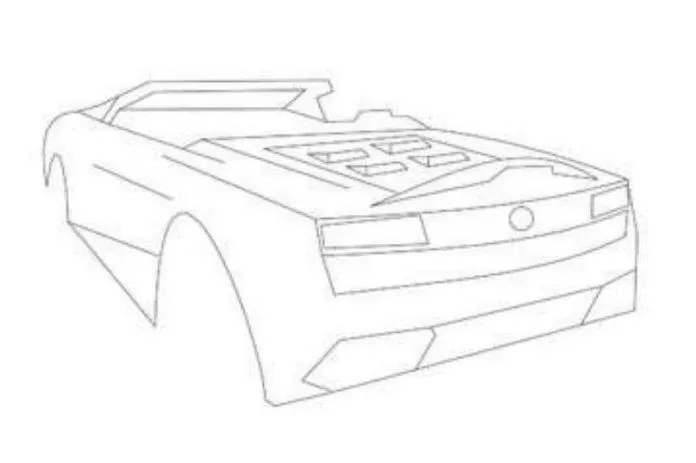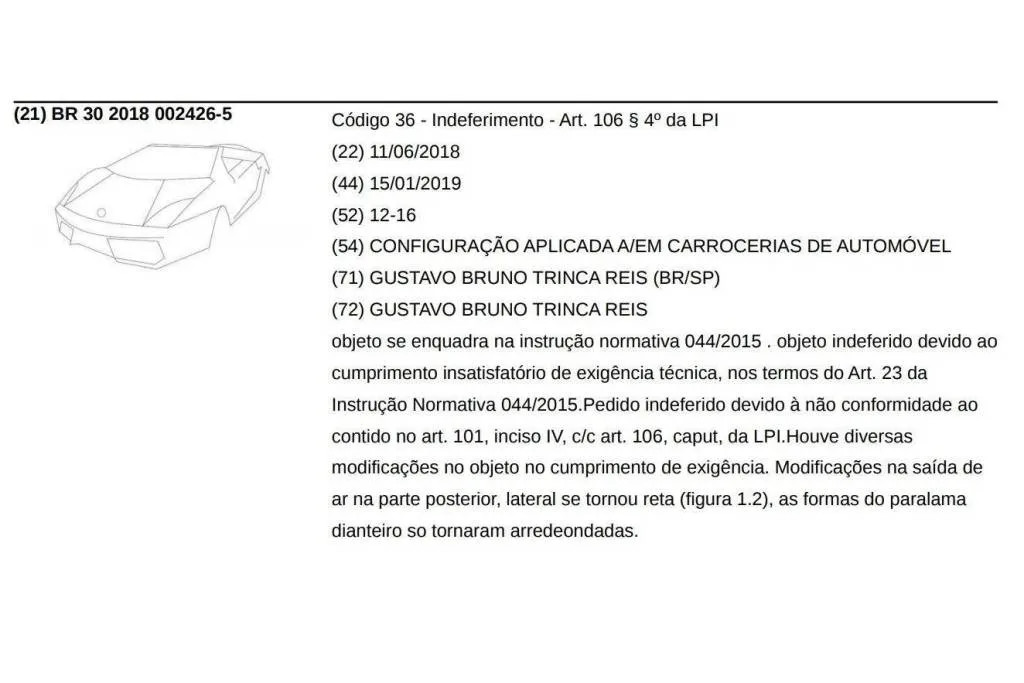In the world of automobiles, there are stories that surprise us, make us laugh and even leave us speechless. And when we talk about “outside the box” cars, few examples are as unusual as the Thunder, a replica of the famous Lamborghini Gallardo made by a shepherd using a Chevette 1983. This project, which generated a lot of buzz, is back in the headlines with a new and curious chapter, and the story only gets more intriguing.
The Origin of Thunder: A Brilliant Idea or an “Aberration”?
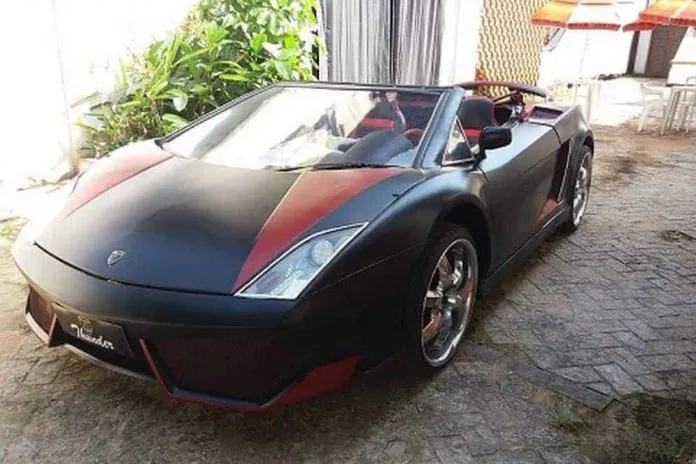
It all started in mid-2023, when the pastor Gustavo Bruno Trinca Reis organized an event on the beach Guaruja (SP) to promote and try to sell his handmade car, the Thunder. The proposal seemed, at first glance, something completely out of the ordinary. Imagine a Chevette 1983, a classic of GM Brazilian, being transformed into a replica of one of the most iconic cars in history: the Lamborghini Gallardo.
The project was audacious. The Thunder, as it became known, had all the visual characteristics of a Lamborghini Gallardo, but with one crucial detail: its chassis was that of a Chevette. The car was handcrafted and, if viewed from a distance, could fool even the most attentive eyes. But what really caught the public's attention was not the attempt to create a supercar from a popular model, but rather the unusual way in which the pastor tried to sell the vehicle and the legal problems that arose from that.
The Guarujá Event and the Controversy
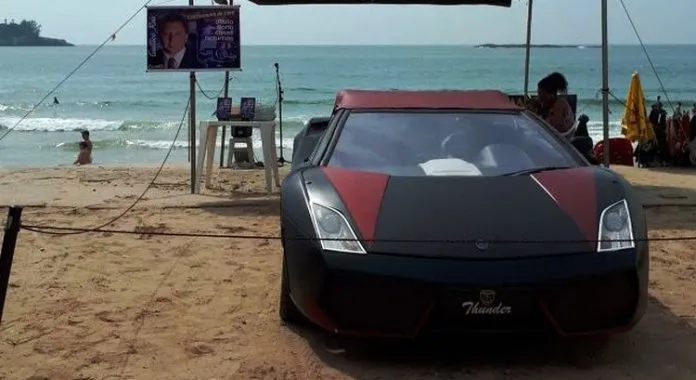
The Thunder launch event took place on a beach in Guarujá, in a peculiar setting. Reis' goal was simple: to sell his handmade car. However, there was a lot of confusion about the nature of the event. While Reis promoted it as a simple car sales event, it ended up being registered with the city hall as a evangelical event, which generated a series of problems with the authorities.
Local police were called to investigate the situation, and the Thunder ended up being seized. To make matters worse, Gustavo Reis made a controversial statement on video, saying that the seizure of the vehicle was an “act of Satan”. This type of statement, combined with the somewhat eccentric nature of the project, generated a series of discussions on social media and in the media. What seemed to be just an attempt to sell a handmade car quickly turned into a case of national notoriety.
The Registration Attempt and the Legal Problems
After the tumultuous event, the website promoting the Thunder was taken offline, and the car's story seemed to have come to an end. However, exactly one year after the incident in Guarujá, the Thunder's story gained a new chapter.
In 2024, the INPI (National Institute of Industrial Property) revealed that Gustavo Reis had tried to register the Thunder patent in Brazil. The registration request, however, was rejected (denied) by the agency due to a series of technical and legal errors. The biggest problem was undoubtedly the design of the vehicle, which, despite being a rather improvised version of the Lamborghini Gallardo, was still considered a unauthorized copy of a model registered in Brazil.
In other words, even if the Thunder was an attempt to recreate the look of a supercar, it could not be registered as an original invention due to the copyright infringement of the Lamborghini Gallardo design. The attempt to register a model that is, in fact, a replica unauthorized, created a legal impasse. Furthermore, the fact that the car was initially registered as a Chevrolet Chevette 1983 meant that it was not recognized as an official prototype, which further complicated the vehicle's regularization.
The Thunder Design: An Ecce Homo of the Lamborghini Gallardo

The most intriguing thing about the Thunder, and what generated so much buzz on social media, was precisely its design. When you look at the car, it's clear that the Thunder It doesn't have the sophistication and finish of an original Lamborghini Gallardo. However, the overall appearance and the attempt to imitate the lines of the Italian supercar are visible.
If the Gallardo it's a car sporty It is luxurious, the Thunder is, on the contrary, a mixture of improvisation and creativity. The body was handcrafted to give the appearance of the Lamborghini, but without the rigor and engineering precision that make the Gallardo a supercar. The aggressive lines and headlights similar to those of the Italian model were present, but the essence of a luxury sports vehicle was replaced by the simplicity and rusticity of the Chevette, which in itself is one of the most basic cars in Brazilian automotive history.
It is not known for sure how the Thunder behaves on the road, as few details about the mechanical assembly have been released. However, if the car retains the original Chevette mechanics, it will be powered by an engine 1.6 four cylinder with a manual transmission, a far cry from the powerful V10 engine that powers a Lamborghini Gallardo. What the Thunder presents is a brutal contrast between the engineering of a supercar and the rudimentary construction of a popular car, a contrast that attracted both criticism and applause, depending on your point of view.
The Seizure and the Legal Process: A Troubled Journey
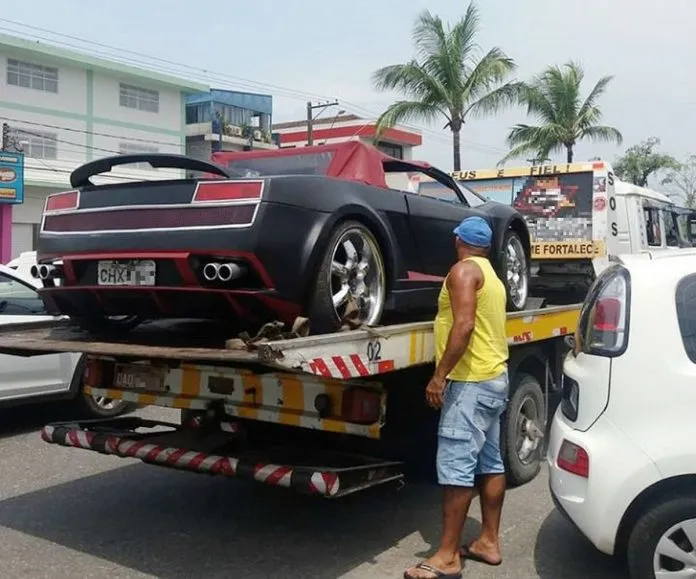
After the Thunder's seizure, many wondered if the project would come to a definitive end. The Thunder itself Gustavo Reis seemed to believe he was dealing with supernatural forces when he referred to the seizure as an “act of Satan.” However, the case did not end there. What appeared to be a story of failure turned into something even more complicated from a legal perspective.
The request for Thunder record by the INPI revealed that the project was not well structured from a bureaucratic and legal point of view. In addition to the problem with the design (the replica of the Lamborghini Gallardo), the car was also not recognized as a prototype, which made the attempt to regularize it even more difficult.
Technical errors and the lack of authorization to use the Lamborghini design also helped to compromise the situation. Even with the INPI's refusal, the Thunder's story did not die completely. The car, although without a official patent, has continued to be a point of debate, curiosity and humor on social media, and it is possible that it will gain more attention as the details of the case unfold.
Thunder's Impact on the Automotive World and Popular Curiosity
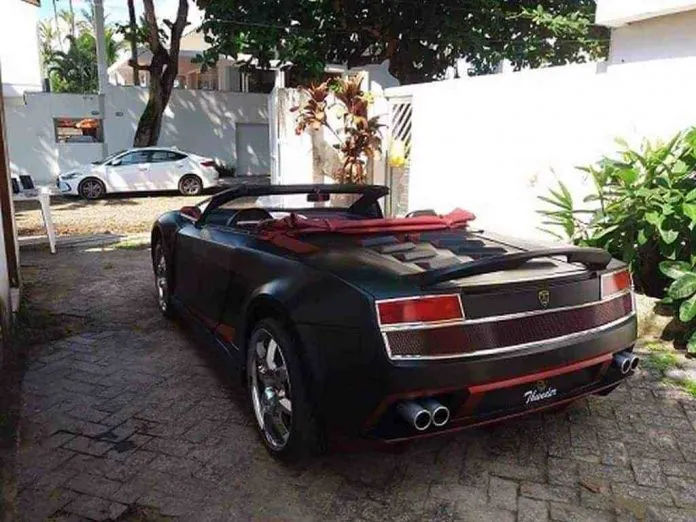
Thunder is not only an example of eccentric creativity and improvisation, but also a reflection of how world of cars can be unpredictable. We often see projects like this — a Chevette transformed into a Lamborghini — being carried out as a way to push the limits of automotive engineering, but also raise questions about the ethics and legality behind such transformations.
For the public, Thunder has become a kind of viral phenomenon, with countless people sharing photos, videos and memes about the car. The criticisms, of course, are numerous, but Gustavo Reis' story is, without a doubt, one of the most curious in the Brazilian automotive world.
Conclusion: The Fate of Thunder

Now, in 2024, the Thunder story seems to have reached a kind of peak of its notoriety. Even without INPI registration and with a series of legal problems ahead, the Chevette converted into Lamborghini remains a symbol of boldness and the limitless creativity of its creator.
But will this story ever come to an end? Or will the Thunder eventually reappear, with a new attempt at regularization or even an even bolder version of its transformation? The future of the Thunder may be uncertain, but one thing is certain: it remains one of the most unusual and fascinating that have already passed through the streets of Brazil.
And you, what do you think of this story? If you had the chance, would you buy a Thunder?
